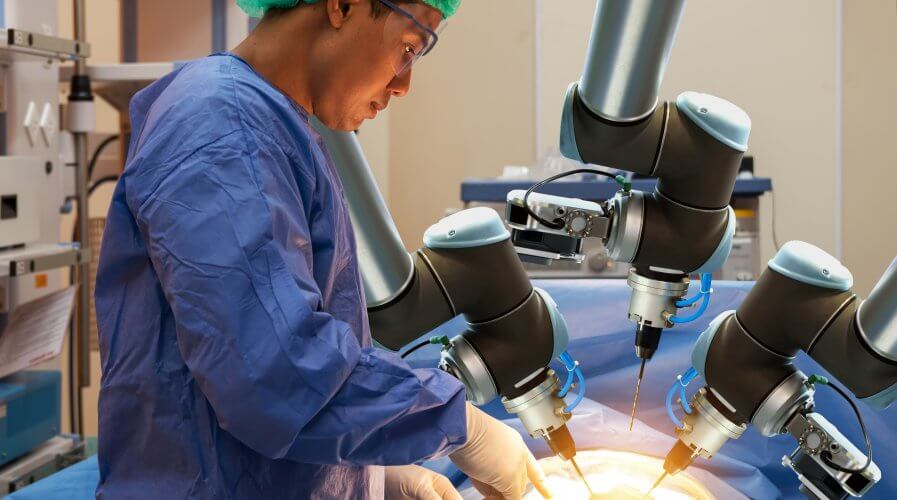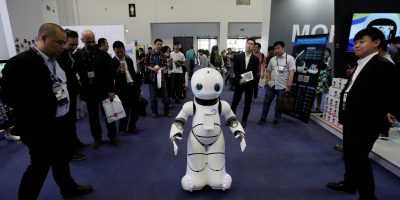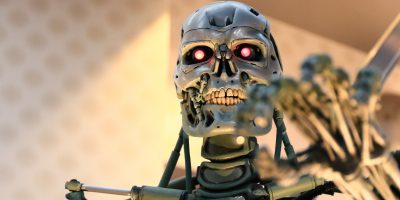
The medical industry could get a much needed boost from AI-powered machines. Source: Shutterstock
Robot surgeons could revolutionize the medical industry
MEDICAL PROCEDURES could become fully augmented with artificial intelligence technologies thanks to a rising trend in Asia’s robotics industry that will see more machines entering the healthcare sector.
Xiaoyi, an AI-powered robot, recently passed the national medical licensing test in China. Developed in collaboration by Tsinghua University and iFlytek, a Chinese information technology firm, Xiaoyi managed to earn a score of 456, a full 90 points higher than the required 360 points needed to pass the medical exam.
According to a report from China Money Network, Xiaoyi successfully memorized and comprehended the contents of a million medical images, two million medical records, 53 medical books and roughly 400,000 pieces of medical literature. The amount of information that Xiaoyi learned usually takes a medical student about five years of intense study.
The feat of the AI-powered machine could be attributed to its design, which utilizes multi-semantics deep learning algorithms to build its learning ability. This enabled the machine to satisfactorily study medical concepts from textbooks, guidance and medical records.
Xiaoyi’s knowledge application ability, on the other hand, utilizes algorithms of keyword semantics reasoning and evidence chain semantics reasoning.
Overall, Xiaoyi’s feat signifies a huge step forward for AI-powered initiatives in Asia. In a statement to China Money Network, iFlytek chairman Liu Qingfeng asserted that Xiaoyi is specifically designed to boost efficiency in the medical field by fostering human-machine interaction. The iFlytek chairman, however, asserted that the AI-powered machine is not in any way being designed as a replacement for human doctors.
“It is not meant to replace doctors. Instead, it is to promote better people-machine cooperation so as to boost efficiency,” Liu said, according to a CMN report.
With Xiaoyi successfully passing China’s national medical exam, iFlytek is planning on releasing the AI-powered robot next March for medical education and training. Once the next stage is done, Xiaoyi could be deployed to assist human doctors in clinical diagnosis and treatment.
The idea of using robots in medicine has become a powerful trend in Asia. India, for one, has invested greatly in the idea of using machines to aid human doctors when treating patients. Just recently, the US-based Vattikuti Foundation announced that it is aiming to install 200 more medical robots to achieve more than 20,000 robot-assisted surgeries in India by 2020, as stated in an Economic Times report.
Vattikuti Foundation goal: 100 Hospitals with Surgical Robots in India by 2020-https://t.co/LPmWxkKII4 pic.twitter.com/Gq0s0tFriJ
— Vattikuti Foundation (@VattikutiRobotx) June 6, 2016
Speaking at the recently held Robotic Surgeon’s Council, Vattikuti Foundation founder and president Raj Vattikuti expressed his optimism about the future of robots in the field of medicine. According to Vattikuti, the use of intelligent machines in the medical field has grown significantly over the past years.
“In late 2011, we entered the Indian market with only eight to nine robots and with hardly any procedures. The market perceived the systems to be very expensive, and surgeons felt that it can take a lot of effort for them to learn and master it.
“Now, we have seen a tremendous progress in the status of robotic surgery in the country as well as a change of perception in the market. A lot of surgeons are really fascinated by the technology and have come forward to learn it,” the executive said, according to an ET report.
Currently, India has more than 50 surgical robots deployed across the country. These machines are manipulated by a team of more than 300 trained robotic surgeons, who conduct roughly 700 robot-assisted surgeries every month.
READ MORE
- Ethical AI: The renewed importance of safeguarding data and customer privacy in Generative AI applications
- How Japan balances AI-driven opportunities with cybersecurity needs
- Deploying SASE: Benchmarking your approach
- Insurance everywhere all at once: the digital transformation of the APAC insurance industry
- Google parent Alphabet eyes HubSpot: A potential acquisition shaping the future of CRM






